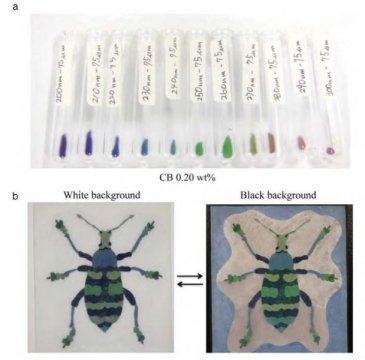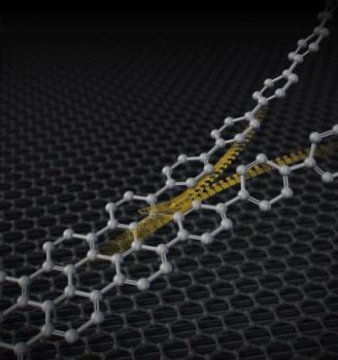#nagoya university
Recreating the chameleon: Material mimics color changes of living organisms
Researchers at Nagoya University develop a composite material that, by adjusting its composition and exposing it to different types of light, can mimic animals’ changes in color.
Nagoya, Japan – A range of creatures, including chameleons, octopuses, and frogs, can change color in response to changes in the environment. Some insights into the mechanisms behind this at the anatomical, cellular, and molecular levels have been obtained. However, much work is still required to obtain sufficient understanding of this phenomenon and to translate it into useful artificial applications.
As reported in the journal Small, researchers at Nagoya University’s Department of Molecular Design and Engineering developed a material containing dyes and crystals that can change the colors and patterns it displays depending on the background color used within it and its exposure to visible or ultraviolet light.
The team was inspired to develop this material by findings obtained in the skin of certain frogs, in which different layers of cells with different properties combine to enable remarkable color changes.
Post link
‘Zipping-up’ rings to make nanographenes
A fast and efficient method for graphene nanoribbon synthesis
Nanographenes are attracting wide interest from many researchers as a powerful candidate for the next generation of carbon materials due to their unique electric properties. Scientists at Nagoya University have now developed a fast way to form nanographenes in a controlled fashion. This simple and powerful method for nanographene synthesis could help generate a range of novel optoelectronic materials, such as organic electroluminescent displays and solar cells.
Nagoya, Japan – A group of chemists of the JST-ERATO Itami Molecular Nanocarbon Project and the Institute of Transformative Bio-Molecules (ITbM) of Nagoya University, and their colleagues have developed a simple and powerful method to synthesize nanographenes. This new approach, recently described in the journal Science, is expected to lead to significant progress in organic synthesis, materials science and catalytic chemistry.
Nanographenes, one-dimensional nanometer-wide strips of graphene, are molecules composed of benzene units. Nanographenes are attracting interest as a powerful candidate for next generation materials, including optoelectronic materials, due to their unique electric characteristics. These properties of nanographenes depend mainly on their width, length and edge structures. Thus, efficient methods to access structurally controlled nanographenes is highly desirable.
Post link


